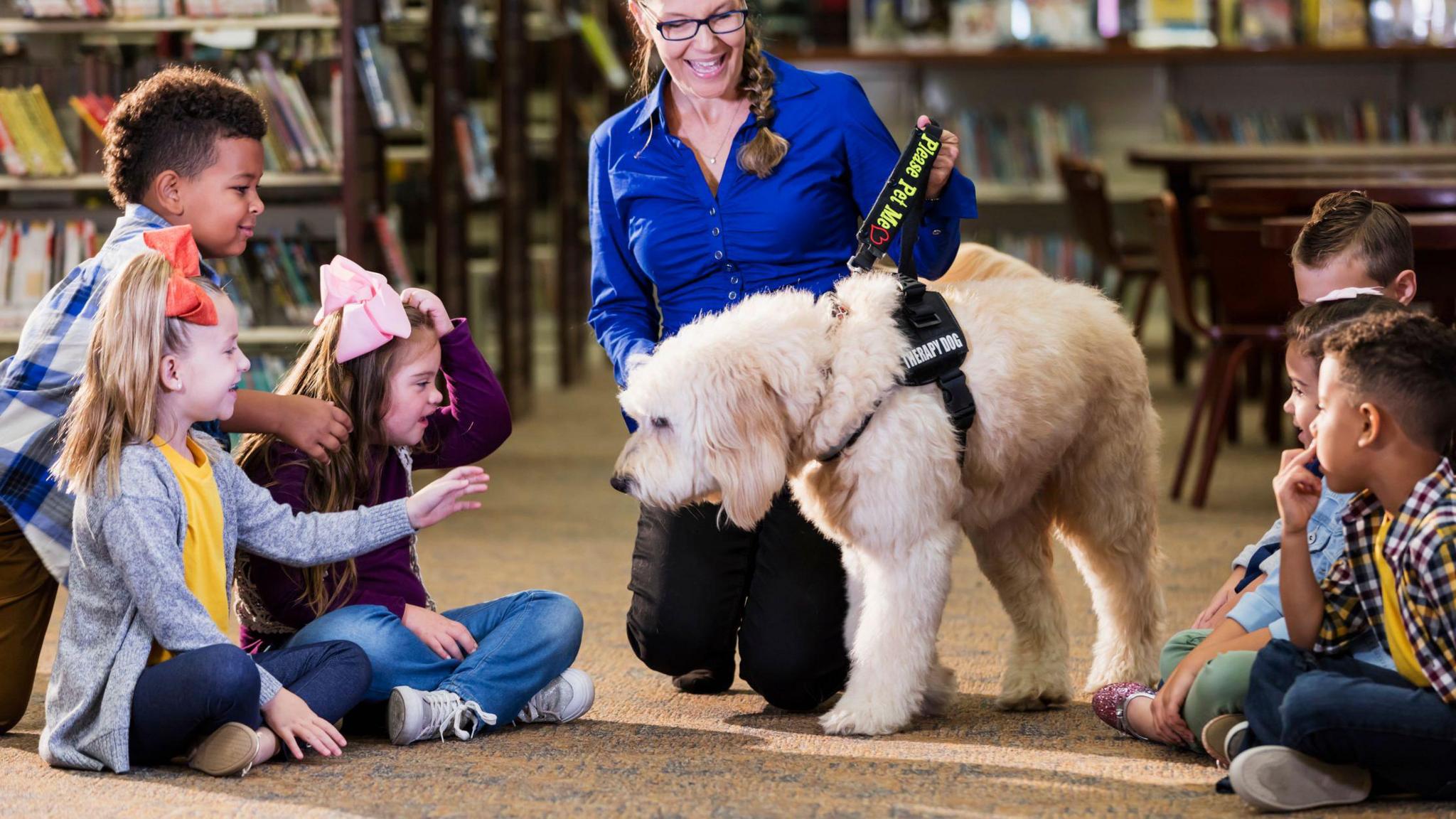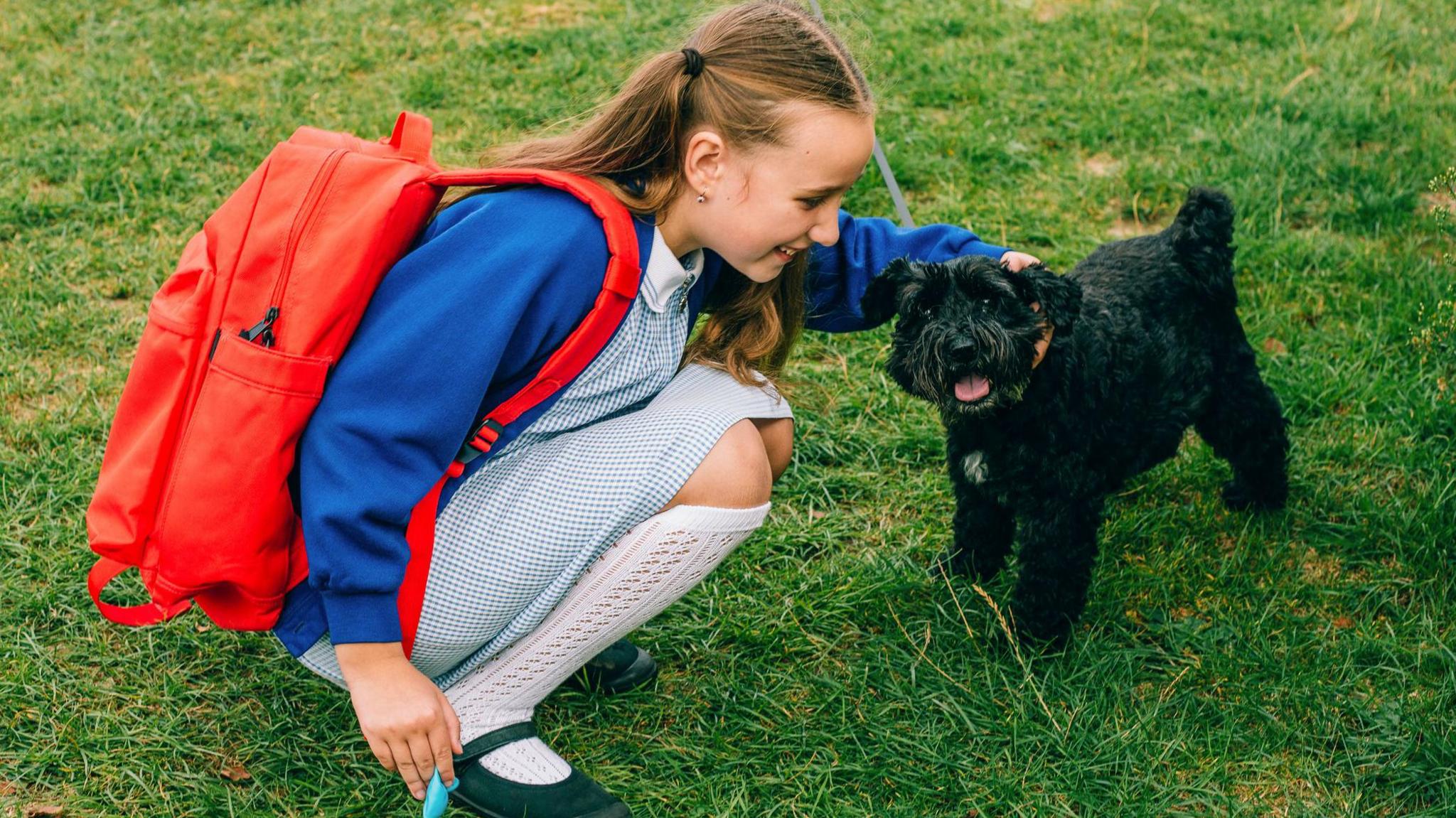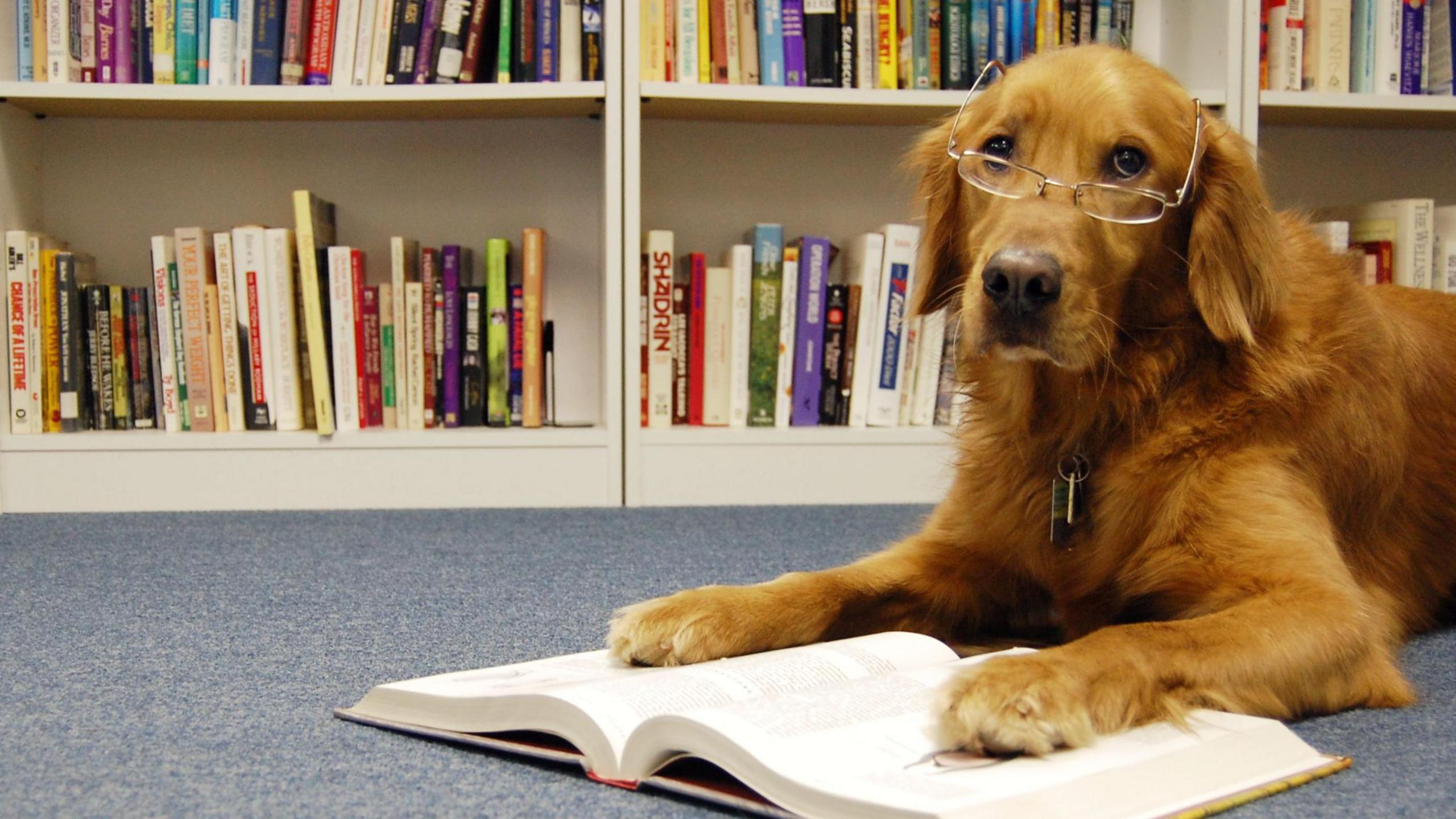Support animals: How does your school's furry friend help out?

Does your school have a dog, and if so, what is their role?
- Published
Having special visitors to the school can be quite exciting, but none more so than when a furry friend with a waggy tail arrives.
The National School Dog Alliance is holding a competition to find the UK's School Dog of the Year 2025.
Many schools in the UK now have frequent visits from morale-boosting dogs, but we want to know how your school dog stands out from the rest.
So what makes yours so special? Or does your school have other pets in class to help with learning?
Let us know if you have alternative support animals and what their roles are.
Let us know using the comments section below.

Is there a friendly furry face to greet you at the school gate in the morning?
There are different types of school dog.
Visiting dogs are often brought into school settings by charities or educational volunteer programmes where dogs are brought into schools.
But permanent school dogs are often owned by a member of staff at the school and are present all year round.

Need help to practise reading? Maybe ask the school dog to listen.
Studies have shown that having dogs in educational settings has a positive impact on social, emotional, physical, behavioural and cognitive (brain) development in young people.
They can also help children with low confidence with things like reading and language skills.
Other dogs are there to help relax pupils who might be having a tough time at school or at home.
Dogs can also encourage more empathy in students and teachers, and encourage them to think of ways to look after the dog and each other.
